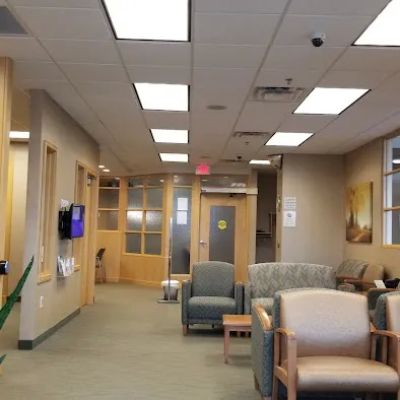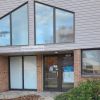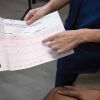- 1 - #understanding-cardiomyopathy - Understanding Cardiomyopathy
- 2 - #why-early-detection-matters - Why Early Detection of Cardiomyopathy Matters
- 3 - #common-early-signs - Common Early Signs of Cardiomyopathy
- 4 - #risk-factors - Risk Factors and Causes
- 5 - #how-to-monitor-your-heart - How to Monitor Your Heart for Early Warning Signs
- 6 - #real-life-story - A Real-Life Story: Catching Cardiomyopathy Early
- 7 - #taking-action - Taking Action for Better Heart Health
1. Understanding Cardiomyopathy
Cardiomyopathy is a condition where the heart muscle becomes weakened, enlarged, or stiff, making it harder for the heart to pump blood effectively. Over time, this can lead to heart failure or arrhythmias if not detected and treated early. While the word may sound intimidating, understanding cardiomyopathy and knowing what to look for can make a significant difference in treatment outcomes.
There are several types of cardiomyopathy, including dilated, hypertrophic, and restrictive forms. Each type affects the heart differently, but the early symptoms often share similar patterns. Recognizing these warning signs can help you seek medical attention before the condition becomes severe.
2. Why Early Detection of Cardiomyopathy Matters
Early detection is crucial because cardiomyopathy can progress silently for years. Many people ignore mild symptoms, attributing them to stress or fatigue. However, timely medical evaluation can prevent heart failure and improve long-term outcomes. Identifying the early signs allows for lifestyle changes and treatments that can slow or even halt disease progression.
At HeartCare Hub, we emphasize proactive heart monitoring and awareness. Catching cardiomyopathy early not only helps preserve heart function but can also improve quality of life and longevity.
3. Common Early Signs of Cardiomyopathy
Recognizing early signs of cardiomyopathy can be challenging since symptoms often appear mild at first. However, subtle changes in your energy levels and breathing patterns can signal underlying heart issues. Here are some of the most common early indicators:
Unexplained Fatigue
Feeling unusually tired, even after adequate rest, can be an early sign of cardiomyopathy. The heart’s reduced pumping efficiency can limit oxygen delivery to your muscles, making everyday activities feel exhausting.
Shortness of Breath
Difficulty breathing during mild activity or while lying down can indicate that your heart is struggling to circulate blood effectively. This symptom often develops gradually and may be mistaken for lack of fitness or aging.
Swelling in Legs or Ankles
When the heart cannot pump efficiently, fluid buildup can occur in the legs, ankles, or feet. This swelling, known as edema, may worsen after long periods of standing or sitting.
Irregular Heartbeats
Palpitations or sensations of your heart racing or skipping beats can signal that the heart’s electrical system is being affected. While occasional irregular beats are normal, frequent or prolonged episodes should prompt medical evaluation.
Chest Discomfort
Though less common in early stages, mild chest tightness or discomfort may occur during physical exertion. It’s important not to ignore these sensations, as they may indicate that the heart muscle is under stress.
4. Risk Factors and Causes
Understanding the risk factors associated with cardiomyopathy can help you take preventive steps. Genetics play a significant role—if someone in your family has the condition, your risk increases. Other contributing factors include:
- High blood pressure or chronic hypertension
- Excessive alcohol consumption
- Previous heart attacks or heart disease
- Metabolic disorders such as diabetes or thyroid disease
- Chronic stress or inflammatory conditions
Identifying these risk factors early allows you to make lifestyle adjustments—such as adopting a balanced diet, exercising regularly, and managing stress—to lower your chances of developing cardiomyopathy.
5. How to Monitor Your Heart for Early Warning Signs
Being proactive about heart health is one of the best ways to detect early signs of cardiomyopathy. Here are a few ways to monitor your condition:
- Regular Checkups: Visit your healthcare provider annually for blood pressure and cholesterol screenings.
- Track Symptoms: Keep a log of any fatigue, shortness of breath, or swelling you experience. Tracking these changes helps your doctor assess potential heart issues.
- Diagnostic Tests: Echocardiograms, ECGs, and blood tests can identify early structural changes in the heart.
Early detection and consistent monitoring can make a significant difference in preventing complications. If you have concerns about your heart health, HeartCare Hub offers resources and guidance for managing cardiovascular wellness effectively.
6. A Real-Life Story: Catching Cardiomyopathy Early
Mark, a 45-year-old teacher, began noticing shortness of breath after climbing stairs—a symptom he initially dismissed as stress or being out of shape. When his fatigue worsened, he sought medical advice and was diagnosed with dilated cardiomyopathy. Because it was caught early, he began medication and lifestyle adjustments that stabilized his condition. His story highlights the importance of listening to your body and acting promptly when something feels off.
7. Taking Action for Better Heart Health
Cardiomyopathy may sound daunting, but with early recognition and proper care, it can be effectively managed. Paying attention to your body, understanding the symptoms, and maintaining a heart-healthy lifestyle are key steps toward prevention. Regular exercise, a balanced diet, and routine medical checkups go a long way in protecting your heart.
For professional advice and access to trusted heart health services, visit HeartCare Hub. Your heart deserves the best care—and taking small steps today can make a big difference tomorrow.





















